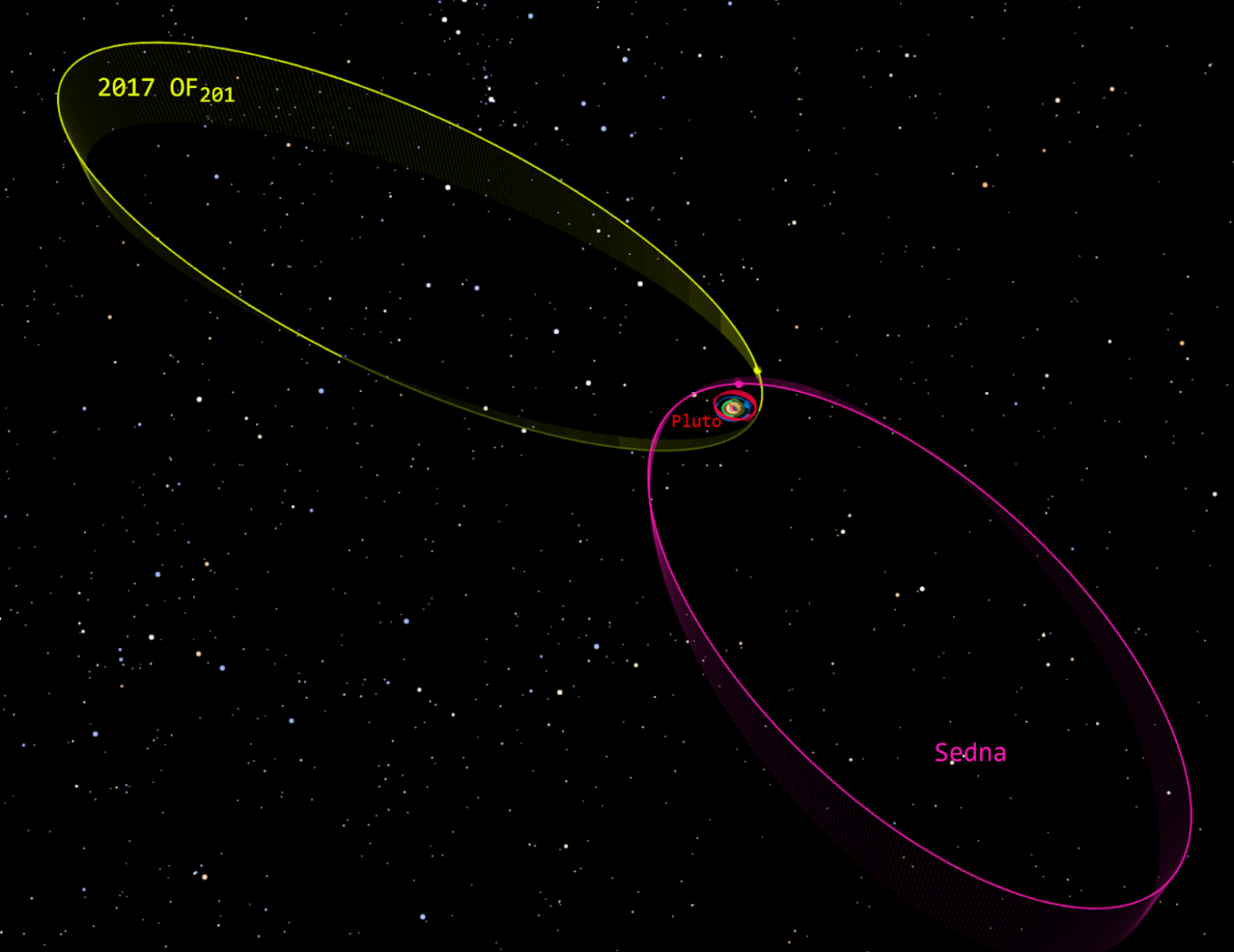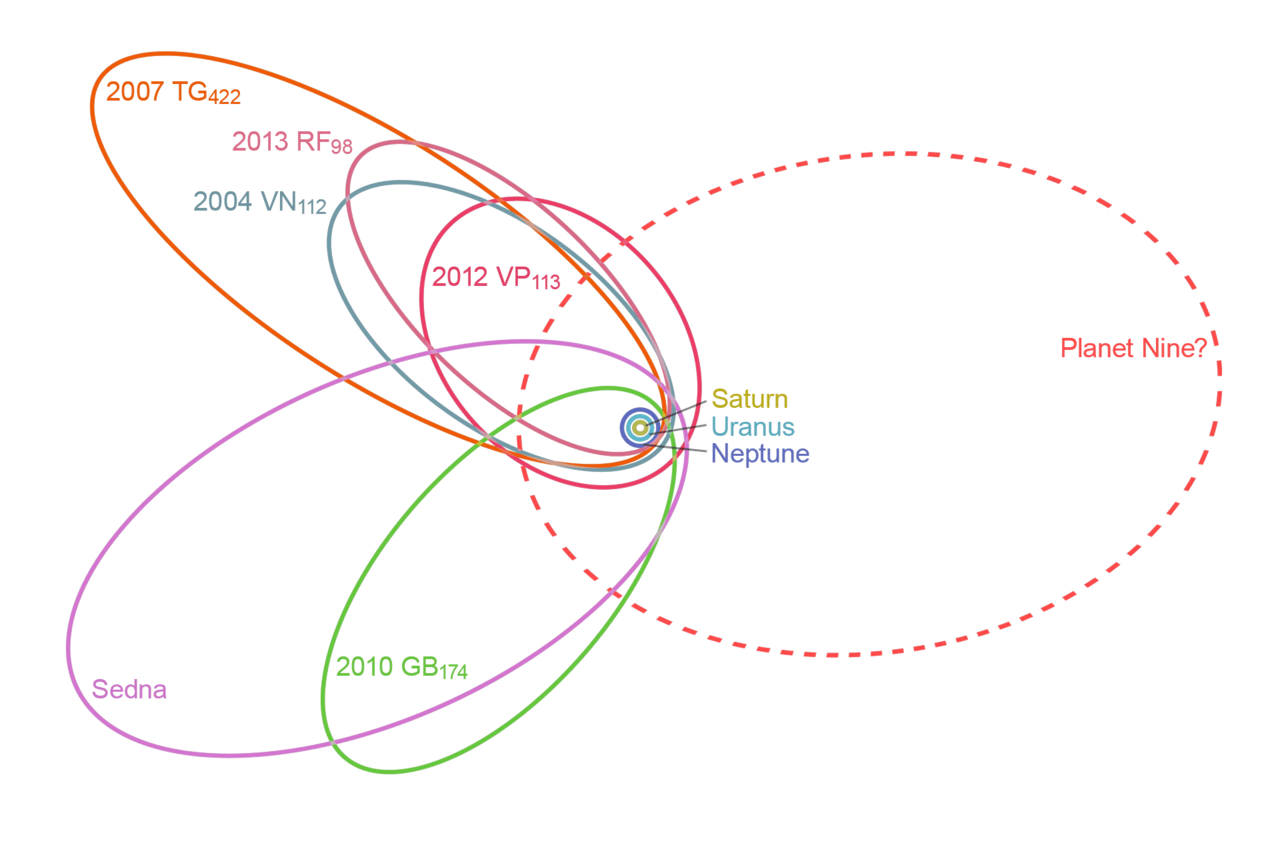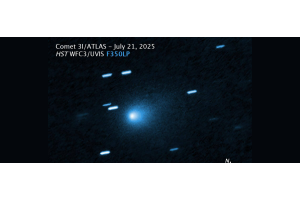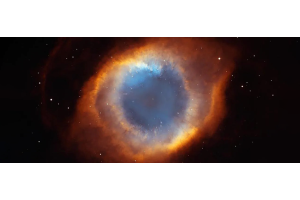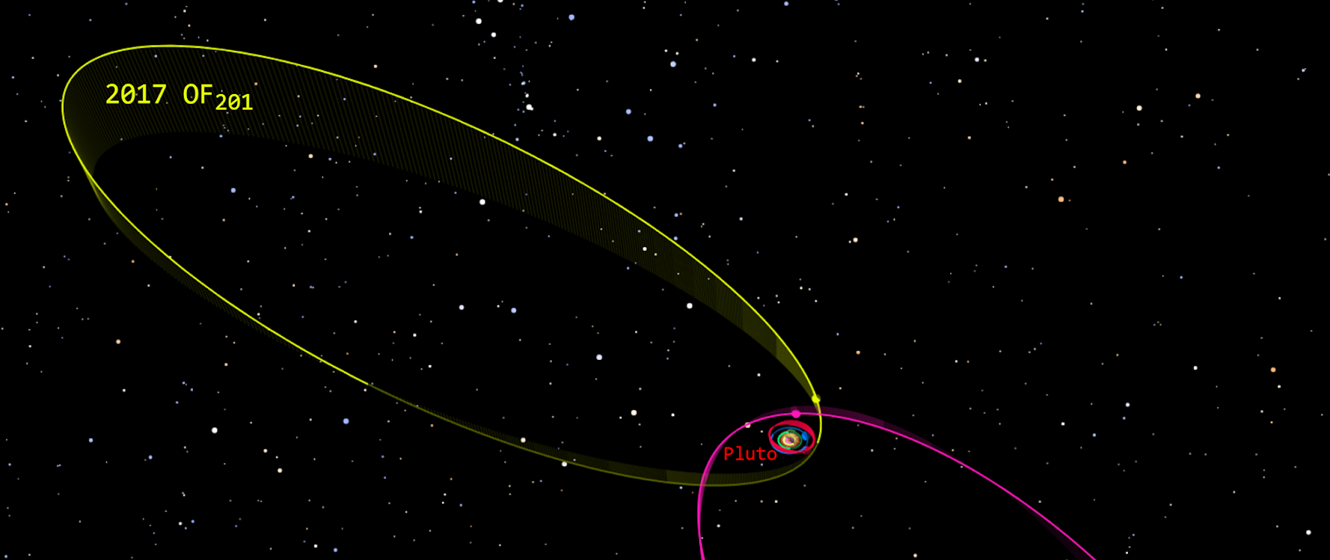
Astronomers have recently identified a new object, named 2017 OF201, in the outer reaches of our solar system that may need to be added to the ever-growing list of “dwarf planets”. Dwarf planet was a term that was first characterized by the International Astronomical Union (IAU) in 2006 upon the demotion of the planet Pluto to “Dwarf planet”. Joining Pluto were the dwarf planets Eris, Makemake, Haumea, and Ceres. These are tiny worlds that are massive enough to be in a spherical shape, but not large enough to have cleared their gravitational neighborhood like the planets Earth, Mars, or even Mercury have been able to do. This new world around the Sun is estimated to be about 700 kilometers, or 430 miles, across, likely wide enough to be in a round shape, and is a likely dwarf planet candidate. It is very similar to the worlds Sedna and Eris, for example. 2017 OF201 follows a highly elliptical orbit, taking over 24,000 years to complete an orbit around the Sun, and its closest approach to the Sun is still 4.2 billion miles away. Temperatures on this world likely plunge below -400°F, making this a world permanently frozen in ice.
In the 1800s, there was thought to be nothing beyond Neptune other than comets making their way in and out of the inner solar system. It was thought that comets exist in a spherical swarm around the Sun known as the “Oort Cloud”. This is why, when Pluto was discovered, it was something of a shock - it did not have an orbit that was highly elliptical like a comet. Therefore, with nothing else known out there, it must be a planet, right? Well, that changed with the discovery of the Kuiper Belt. First one object, then two, then dozens of objects were found, all with a similar orbit to Pluto. And then, when the object later known as Eris was discovered, it was found that it had an even greater mass than Pluto. So, not only was Pluto not alone out there, it was also not even the largest object in the Kuiper Belt. Since then, over 5,000 trans-Neptunian objects (TNOs) have been discovered in total, and Pluto was relabeled as a dwarf planet (much to the pain of children and Disney dog lovers alike).
But many of their orbits have an unusual clustering associated with them. At first glance, this might appear to be (and still could be) a coincidence, but generally speaking, clustering of many objects is associated with a more massive object tugging on them. But the known 8 planets are too far away to be responsible for this degree of clustering. In 2016, researchers Konstantin Batygin and Mike Brown proposed its existence to explain the unusual clustering of orbits of TNOs in the Kuiper Belt, suggesting a planet roughly 5 to 10 times Earth’s mass could be sculpting these paths from a distance of hundreds of billions of miles. Astronomers have since scoured telescope data, from the Pan-STARRS survey to the Dark Energy Survey, hoping to spot this elusive world, with its orbit potentially taking 10,000 to 20,000 years to complete. Despite extensive efforts, no direct sighting has been confirmed, leaving room for debate about whether Planet Nine exists or if other gravitational forces, like a disk of smaller objects, could account for the observed patterns.
However, the recent discovery of this potential new dwarf planet throws a wrench into the Planet Nine idea. While 2017 OF201 follows a highly elliptical orbit stretching into the Oort Cloud like the other worlds we’ve discovered, its path doesn’t align with the clustered orbits thought to be shaped by Planet Nine, suggesting the gravitational pull of a massive planet might not be the only explanation. Other astronomers argue that 2017 OF201’s existence hints at a more populated outer solar system, with possibly hundreds of similar bodies, which could dilute the need for a single massive planet to explain orbital anomalies.
So, if it’s not a giant planet, what is causing the clustering? Beyond Planet Nine, several alternative ideas have emerged to explain the clustering of trans-Neptunian objects (TNOs). One idea suggests a massive disk of smaller icy bodies in the Kuiper Belt could collectively exert enough gravitational pull to shepherd the orbits of TNOs into their observed patterns, without needing a single large planet. Another posits that the clustering might be a temporary effect, caused by the gravitational influence of a passing star or rogue planet in the solar system’s distant past, disrupting TNO orbits long ago. But it could also just be a form of observational bias, with some arguing that the apparent clustering could result from the limited scope of our telescope surveys, which might only detect objects in certain aligned regions (such as in regions not facing the Milky Way).
The discovery of 2017 OF201, a potential new dwarf planet, marks a new and exciting turn in our exploration of the solar system. While its 430-mile-wide frame and unique orbit into the Oort Cloud add to our catalog of intriguing celestial bodies, its misalignment with the clustered orbits of extreme trans-Neptunian objects casts doubt on the existence of Planet Nine, a theorized giant that has eluded detection. This find, uncovered through diligent analysis of archival telescope data, hints at a busier outer solar system, potentially teeming with undiscovered objects that could redefine our cosmic map. As the Vera Rubin Observatory prepares to scan the skies in 2025, alongside tools like the James Webb and Hubble telescopes, the stage is set for more breakthroughs! Will we find a real Planet 9 after all? Tune in and see!

Learn More
Interested in diving deeper into the world of astronomy? Check out our AstronomyHub for a wealth of articles, guides, local resources for planetariums and observatories near you, and more to enhance your stargazing experience.





